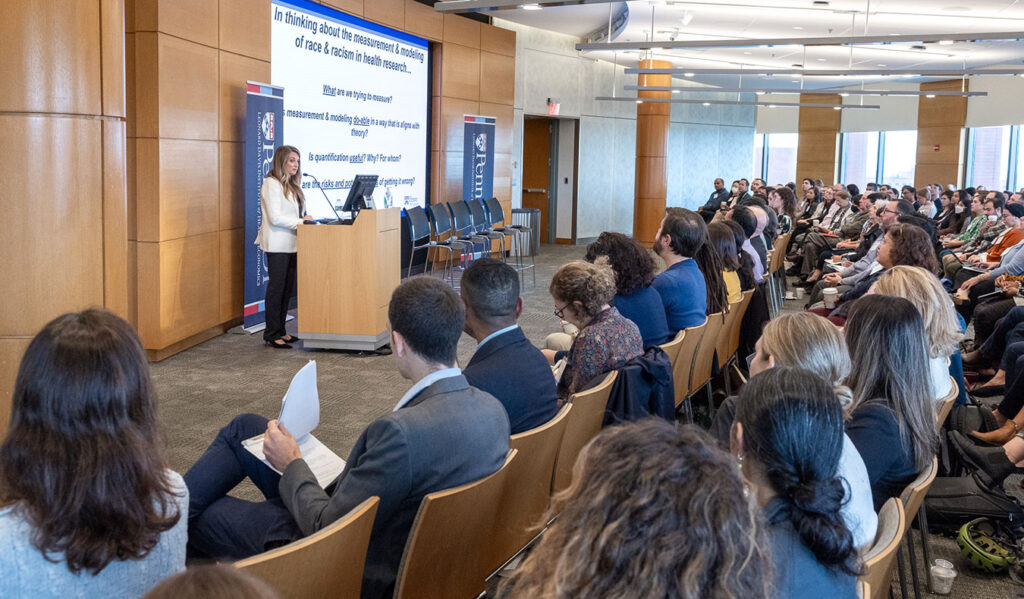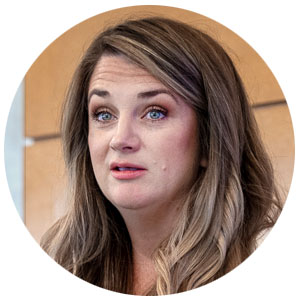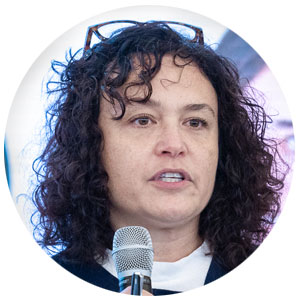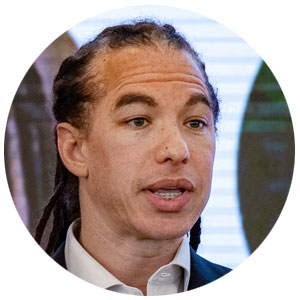
Sharing Patient Narratives With Clinical Staff is Linked to Better Patient Experience
LDI Researchers Highlight the Beneficial Impacts of Sharing Patient Narratives
News

Also see the CONFERENCE PHOTO PAGE
Is the U.S. scientific community using inadequate methods to measure and address racism in health care at the same time structural racism continues to deny millions of people access to quality health care? This weighty and emotionally freighted question was at the core of a University of Pennsylvania Leonard Davis Institute of Health Economics (LDI) September 29 conference entitled “Methods Matter: Understanding and Measuring Race and Racism in Health Research.”
“We are looking at the challenges, conundrums, and possibilities facing health researchers working to investigate racialized patterns of health and mortality and the role of racism in the production of those inequities,” said conference host LDI Senior Fellow Courtney Boen, PhD, MPH, as she opened the event. An Assistant Professor of Sociology at Penn’s School of Arts & Sciences, her research focuses on the social factors producing racial, immigrant-native, and socioeconomic health inequities across the life span.

“The research needed to understand these patterns of inequity is not easy to do and there are many challenges and potential missteps in this work,” Boen told the audience. “In much of the empirical work, race is considered an apolitical, demographic, stable, individual level characteristic. And this is consequential for the interpretation of the work insofar as it severs racialized patterns of health and longevity from a broader system of racism and can serve to essentialize racial inequities in ways that make them seem natural, inevitable, or apolitical.”
Giving voice to one of the top items of consensus and concern at the conference, Boen explained, “There’s a stunningly large body of research focused on documenting the downstream consequences of structural racism. And while this is really important work, it can promote a form of methodological individualism that focuses on the individuals and groups experiencing racism, discrimination, exploitation, and violence, rather than on the institutional actors and systemic processes upholding racism and doing the oppressing, discriminating, and exploiting.”
Held at a conference center in The Wharton School’s Huntsman Hall, the event brought together 14 experts in the field of health equity research from Penn, Duke University, Princeton University, Rutgers University Newark, University of Michigan, Drexel University, Indiana University Bloomington, and the University of Minnesota.
Presentations and panels focused on methodologies for measuring and interpreting racism and racial disparities, the challenge of measuring structural racism, matching theory to methods, and race in clinical predictions. Organized by LDI, the Perelman School and its Department of Biostatistics, Epidemiology, & Informatics, the event was also sponsored by the Penn School of Arts & Sciences; Center for the Study of Ethnicity, Race, & Immigration; Penn Medicine Office of Inclusion, Diversity & Equity; Penn Institute for Biomedical Informatics; Penn Implementation Science Center; the Population Aging Research Center; and the Population Studies Center.

“Our research questions have become impoverished,” said Ana Diez Roux, MD, PhD, Director of the Urban Health Collaborative at Drexel University. “We really need to ask better questions in the population health field that is now dominated by the individual paradigm regression, traditional randomized trials, observational studies, and causal inference. Yes, these methods can be very useful in answering pieces of the question, but we may need other methods–triangulation or evaluation of action as a way to provide a more comprehensive answer to the more important questions we want to answer.”
Frank Edwards, PhD, Assistant Professor at the School of Criminal Justice at Rutgers University Newark agreed. “Yes, we have to be open to triangulation and descriptive work and recognize multiple ways of knowing and multiple kinds of angles for getting at different kinds of questions. And it’s really key that we be sophisticated enough to juggle different kinds of evidence,” he said. “If we think that the root causes of racial inequalities are, in fact, institutional and structural features, then the kinds of interventions, theoretical descriptions, and methodological approaches should be targeted at those same structures. When we’re looking at racial inequalities, we always have to engineer our models back to the set of elite interests that generated this relationship and is producing these inequalities. If we’re not doing that, I don’t think we’re doing our job.”

“Triangulation” in health care research refers to the simultaneous use of multiple methods to collect and analyze data. For instance combining quantitative and qualitative methods, or collecting data from multiple sources, such as community members, patients, clinicians, and administrative records. The goal is to eliminate various kinds of bias that can often occur in a single data collection stream.
“Description,” Roux pointed out, “can be a pretty simple but powerful thing. An accurate description can shed light and provide insight into something that people aren’t seeing. Novel description angles can be a great way to highlight system aspects that aren’t obvious. This is something that researchers don’t pay enough attention to as a method for impacting policy in a compelling way.”
“An example is a recent paper that contrasted exposures to particulate matter (PM2.5) among racialized groups with groups whose consumption was responsible for that exposure,” Roux continued. “It turns out that white [people] were responsible for a lot of the PM2.5 pollution because of their production and travel patterns but those most exposed were communities of color who were not responsible for PM2.5 production. The paper showed the dynamics and the injustice in a purely descriptive way and, so, we should not underestimate the power of simple analysis. We don’t always need to get super complicated to have a powerful message.”

“Identifying the mechanisms of structural racism in any given society is a process of asking, ‘who is it that we’re trying to control?'” said Margaret Hicken, PhD, MPH, Associate Professor of the Survey Research Center at the University of Michigan’s Institute for Social Research. “Who is it that we’re exploiting? Who is it that we are using to benefit the larger society? And then we begin studying the operationalization and structure of our institutions, along with the policies and programs they create. I’ve been trying to think through what the features are in these interlocking, dynamic networks, because I think that this has real implications for measurement. One feature is the ubiquitous dynamic of how structural racism needs to control, surveil and dispossess.”
A fresh new way for parsing out the quantitative measures of structural racism involves using the established sciences of network and systems analysis.
“One of the ways to identify the structural features of racism in multifaceted, interconnected, and interlocking systems is the use of latent variables,” said Tyson Brown, PhD, Associate Professor of Sociology at Duke University. [Latent variables are things that cannot be directly observed or measured but can be inferred from other observable variables. They are often used in statistics and machine learning to model complex phenomena, such as human behavior, economic trends, and physical systems.]
“People often think of racism as abstract and sort of ethereal and as something that can’t be directly observed. But sometimes that’s not true,” Brown continued. “We do have methods well suited for getting at things that are not directly observed by using things that are observed. And latent variables do that fairly well. It’s a promising approach and I’ve personally started a nascent collaboration with engineers to start doing systems analysis in this area.”
Another major issue at the conference was the routine way in which health equity researchers often fail to include members of the studied group into the research project’s design, execution, or analysis.

“Ensuring that members of oppressed communities have a seat at the table in shaping research, advocacy, and policy on issues related to structural racism is really critical,” said Brown. “It’s clear that involving oppressed communities in the research is important on a number of fronts, on scientific, ethical and equitable grounds. After all, they are the individuals closest to the health and health care experiences being studied, and they themselves have very valuable insights about the problems and also possible solutions.”
“It’s common for scholars to only engage with these communities in a perfunctory or superficial manner, if at all,” continued Brown. “Approaches like this are paternalistic. Scholars often assume they know what’s best. They start with a strong personal sense of what the problem is and go into the project with that preconceived notion, believing they may also already have the solution–which is antithetical to science.”
“It’s essential to have equitable partnerships–not just allies, but actual partners with the communities being studied,” Brown continued. “And we do that in a number of ways, including engaging early and often and having them involved throughout the entire life cycle of the study, beginning with the design and the planning phase all the way through the implementation and ultimately dissemination.”
One long-time barrier to doing this is academic grants’ usual lack of funding opportunities to underwrite community involvement in a study.

“I’m doing community engaged research right now and it is incredibly challenging to get a grant that goes to community members for their participation,” said Elaine Hernandez, PhD, MPH, Associate Professor of Sociology at Indiana University Bloomington. “How do you engage with people who are already so incredibly busy? One of the strategies my collaborator has come up with is language. Instead of talking about ‘community-based research,’ we’re now talking about a ‘Community Leadership Board’ as we try to get funds to pay them. And I think that the more that we can create grants and funds that are easier to get to the community, the more we can give that power to the community as well.”
Another area that disadvantages the production of more meaningful health disparities studies is the phenomenon known as “health equity tourism,” a term coined by Elle Lett, PhD, MA, MBiostat. It describes researchers who have no prior experience in health equity research or the affected communities but are well connected with the National Institutes of Health (NIH) grant offices. They win grants that fund low-quality research that fails to advance the field of health equity and takes up funding that doesn’t go to early-career researchers of color.
In related gatekeeping trends, panelists noted that the journal peer review process has artificially suppressed the publication of papers on structural racism and that was just one of the forces that keeps researchers of color disadvantaged in the academic publishing world. They note a separate “Matthew Effect” that is a bias in favor of papers submitted by well-established researchers with many publications in high-prestige journals. The same Matthew Effect bias thwarts the publishing efforts of up-and-coming researchers of color interested in publishing on structural racism in health care. The Effect’s name comes from the Gospel of Matthew that says, “For to all those who have, more will be given, and they will have an abundance; but from those who have nothing, even what they have will be taken away.” (Matthew 25:29)

LDI Researchers Highlight the Beneficial Impacts of Sharing Patient Narratives

Penn LDI’s Carmen Guerra Warns a White House Forum

A Widespread Presence at the Country’s Largest Gathering of Health Services Researchers

Penn LDI Health Services Researchers Spotlight and Network Around Their Latest Work

Baltimore Event Immerses Them in the National Health Services Research Community

Disparities Were Modest but Persisted